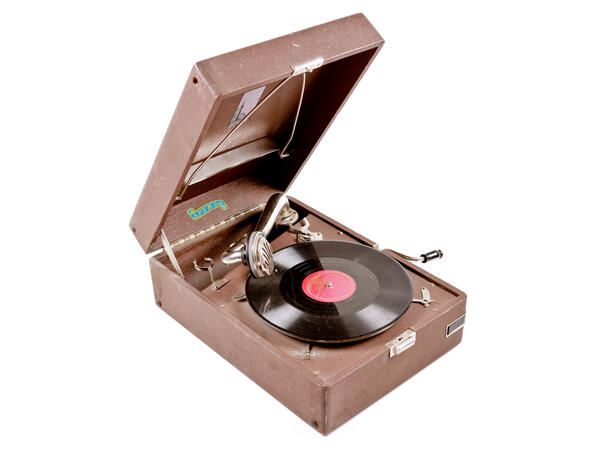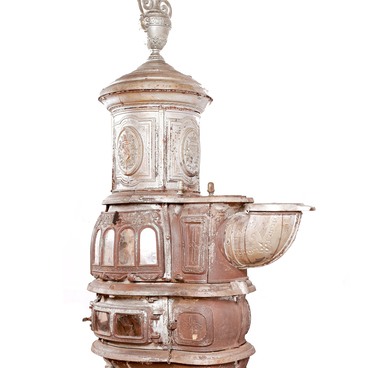The collection of the Kasimov Museum-Reserve contains a phonograph ‘Friendship’ produced at the Leningrad Phonograph Factory in the 1930s–1960s.
The first phonographs were produced at the beginning of the twentieth century by the French company ‘Pathé’ — it was founded by two brothers Emile and Charles Pathé. The company quickly became famous all over the world. It supplied its products to various countries, including Russia.
The new device was a portable compact version of the gramophone. With its help, one could listen to vinyl records. The phonographs were mechanical and set into motion using a spring: there was a handle on the right that controlled its tension. The handle had to be spun and then released — the phonograph played while the spring was unwinding and returning to its original position. On average, one winding-up was enough to listen to one side of the record.
The horn of the phonograph could be folded and hidden inside — due to this, the device was smaller in size than a gramophone. The carcass was a leather case that resembled a suitcase. There was a handle on the side that allowed one to carry a phonograph around.
The device was often switched on in public places — for example, people danced to the sounds of a phonograph in parks and courtyards. Its sound was loud enough, but the volume level could not be adjusted.
The phonograph acquired great importance during the Great Patriotic War. Soldiers at the front listened to records while resting: music helped distract them from the difficult situations, and patriotic songs raised morale. Veterans recalled cases when soldiers exchanged bread for records to hear familiar melodies.
Wartime photographs often depict phonographs, and songs of those years tell about them. For example, Leonid Utesov in the song ‘Day and Night’ sang about how soldiers listened to music during the liberation of Warsaw:
The first phonographs were produced at the beginning of the twentieth century by the French company ‘Pathé’ — it was founded by two brothers Emile and Charles Pathé. The company quickly became famous all over the world. It supplied its products to various countries, including Russia.
The new device was a portable compact version of the gramophone. With its help, one could listen to vinyl records. The phonographs were mechanical and set into motion using a spring: there was a handle on the right that controlled its tension. The handle had to be spun and then released — the phonograph played while the spring was unwinding and returning to its original position. On average, one winding-up was enough to listen to one side of the record.
The horn of the phonograph could be folded and hidden inside — due to this, the device was smaller in size than a gramophone. The carcass was a leather case that resembled a suitcase. There was a handle on the side that allowed one to carry a phonograph around.
The device was often switched on in public places — for example, people danced to the sounds of a phonograph in parks and courtyards. Its sound was loud enough, but the volume level could not be adjusted.
The phonograph acquired great importance during the Great Patriotic War. Soldiers at the front listened to records while resting: music helped distract them from the difficult situations, and patriotic songs raised morale. Veterans recalled cases when soldiers exchanged bread for records to hear familiar melodies.
Wartime photographs often depict phonographs, and songs of those years tell about them. For example, Leonid Utesov in the song ‘Day and Night’ sang about how soldiers listened to music during the liberation of Warsaw:


